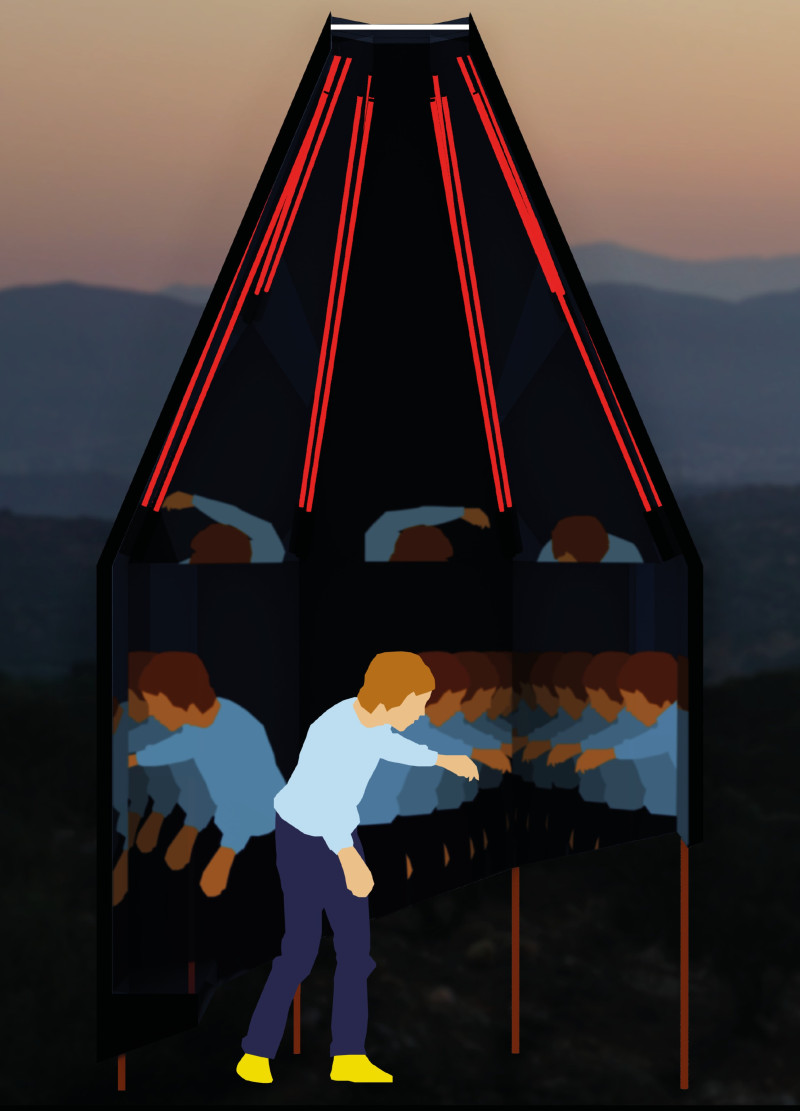5 key facts about this project
The Many Pavillon is designed as an interactive space that focuses on light, sound, and user engagement. It serves as a recreational area that evokes the feel of a nightlife experience, inviting both personal and shared interactions. The design centers on creating an atmosphere that inspires immersion, allowing visitors to connect with their surroundings and each other.
Spatial Configuration
The octagonal interior layout is a defining feature, promoting a sense of playfulness while ensuring an intimate environment. A low entrance leads visitors through a transitional space into a larger area that rises to a height of four meters. This unexpected volume invites exploration and enhances interaction among visitors, cultivating a strong sense of community.
Lighting and Atmosphere
Lighting is a critical element in The Many Pavillon, with LED fixtures strategically installed in the corners. These lights create a changing palette of colors that enhances the atmosphere as activities unfold within the space. The dynamic nature of the lighting adds depth to the visitor experience, enriching the sensory engagement through visual stimulation.
Acoustic Design
Sound integration is fundamental to the design, featuring speakers arranged in a circular pattern at head height. This setup provides a balanced auditory experience, supporting various sound performances. The arrangement encourages social interaction, allowing visitors to connect with music and each other in a shared environment, further enhancing the communal feel of the space.
Materiality and Structure
The outer shell comprises black painted pine panels, providing a durable and weather-resistant facade. This choice establishes a contrast with the mirrored surfaces found throughout the interior. The mirrors amplify reflections, contributing to a sense of depth and spaciousness. Behind the scenes, a steel framework supports the structure, balancing strength with flexibility for possible future adaptations.
A hidden bench integrates into the outer walls, offering a place for visitors to relax while housing necessary technical equipment within a clean and uncluttered design. This thoughtful approach to both functionality and aesthetics ensures that the space remains focused on the user experience.



















































